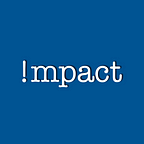The Widening World of FemTech: Tracking the Trends - Samantha Butts
A relatively new word has entered our health care vocabulary: “FemTech,” short for “female technology.” It refers to technologies focused specifically on women’s health, from fertility to menopause. The term was coined in 2016 by the founder of the period-tracking app Clue.
As public awareness accelerates, funding is surging, new companies are forming, and more and more women are engaging in FemTech applications. The global FemTech market is expected to grow more than 16 percent annually by 2030, according to a recent report from Acumen Research and Consulting. A significant portion of these entrepreneurial companies are owned and run by women.
Why is FemTech so important today? We posed the question to Samantha “Sam” Butts, MD, physician leader, FemTech thought leader, and abiding advocate for women’s reproductive health and health equity.
Sam, how do you define FemTech? What kinds of realms does it span?
FemTech includes a range of digital solutions — wearable and clinical devices, products, platforms, software, apps, and services — that improve health care for women across a spectrum of female-specific conditions. Concerns addressed range from menstrual health and sexual wellbeing to pregnancy, contraception, and menopause, along with general health conditions that affect women disproportionately or differently, such as osteoporosis and cardiovascular disease. Fertility is a major area of focus for FemTech; in fact, mobile phone apps that track fertility and pregnancy account for more than 50 percent of the market.
What is prompting the industry’s growth?
As knowledge of women’s health issues deepens, the use of technology to track and manage these issues grows in tandem. FemTech’s expansion has been further fueled by the increasing investment in telehealth and remote motoring systems catalyzed by the COVID-19 pandemic.
What benefits does FemTech deliver for women’s health, and beyond?
FemTech, in a word, empowers women. It provides a more convenient way for them to access care and take charge of their health and bodies. Technology-based tools — health care trackers, at-home diagnostics, and wearable devices, for instance — help women understand key health indicators, such as their menstrual cycle, so they can be better informed and communicate more effectively with their health care providers. And these tools benefit providers, too. As physicians, we want our patients to have agency over their health. The better informed they are, the faster we can investigate and resolve their clinical issues.
Do you see any downside to the technology?
It all depends on what patients do — or don’t do — with the information they receive.
In 2016, I was interviewed by New York Magazine about the question, should you take an at-home fertility test? Knowledge is power, for sure. But to turn knowledge into action, patients should be assisted by professionals who have the expertise to help them interpret these tests and determine next steps. For example, a woman may take a home test because she’s worried about her biological clock winding down. The test may indicate she’s still fertile, but for how long? Our concern is that people may be overly reassured and not have the nuanced conversations they deserve. On the flip side, we worry that patients who get ‘bad news’ about their biological clocks can dive into an emotional tailspin, to the point that they’re paralyzed to do anything.
Fertility is a much larger issue than a biological clock or an egg reserve test. Home tests are best complemented by an in-depth conversation with a reproductive specialist, who can offer guidance based on full health history and assess the full range of options for action.
Thank you, Sam. We appreciate your insights and expertise.
Click here to view her LinkedIn.
*****
Samantha Butts, MD MSCE, is a reproductive endocrinologist and sought-after thought leader in FemTech. She specializes in treating individuals and couples who require fertility treatments to achieve pregnancy. Currently, Sam serves as a professor of obstetrics and gynecology and chief of the Division of Reproductive Endocrinology and Infertility at Penn State Health. She is devoted to building the next generation of medical leaders, who will lead the way in health tech, patient education, and reproductive health equity.
